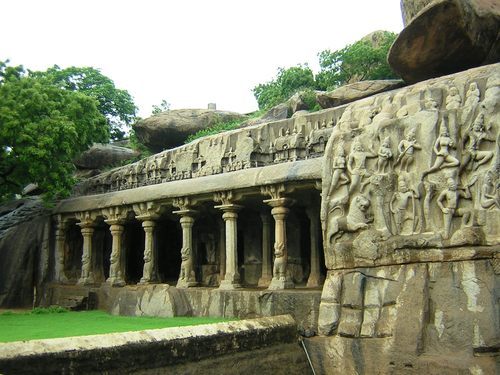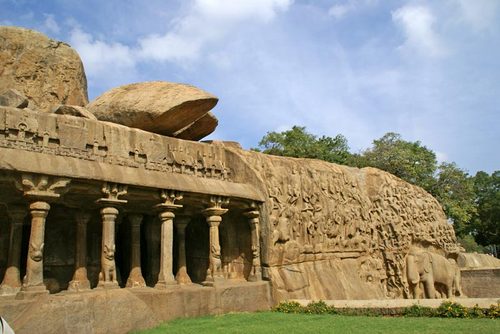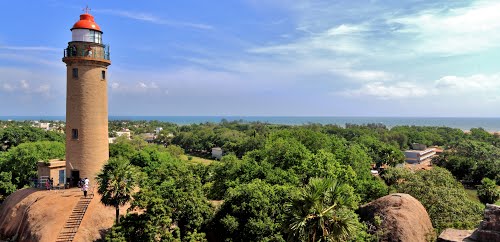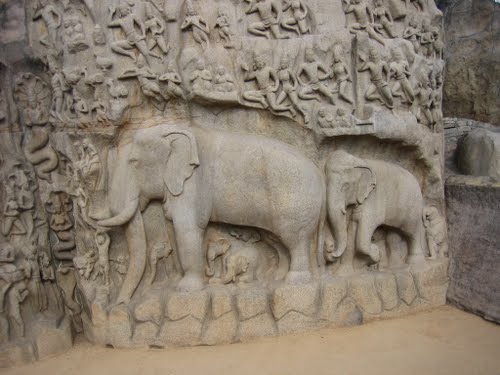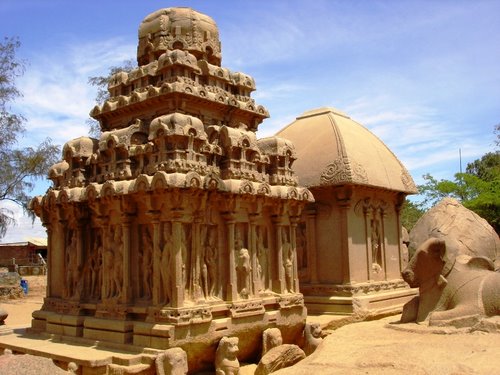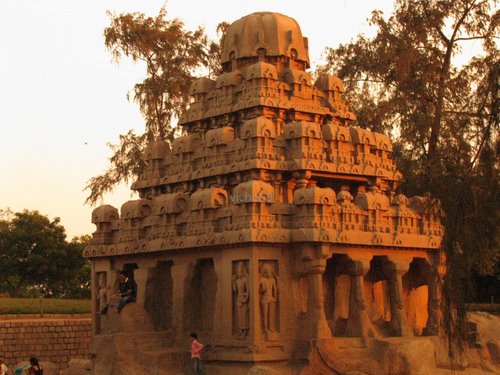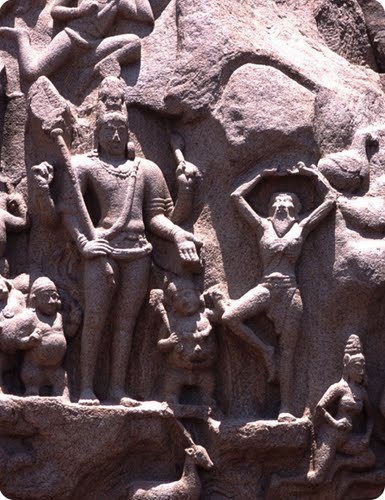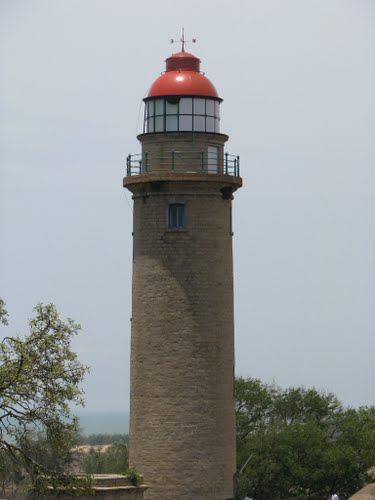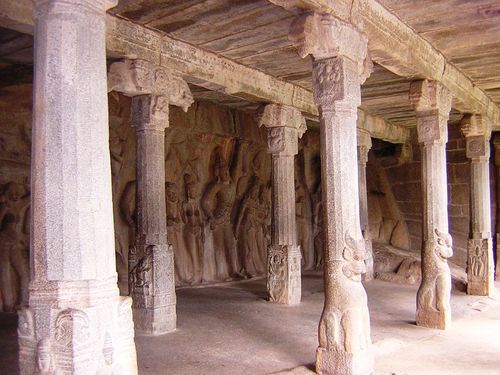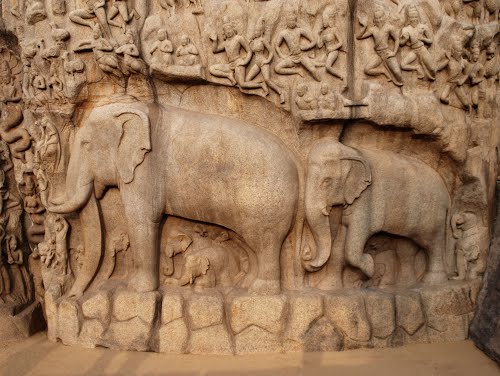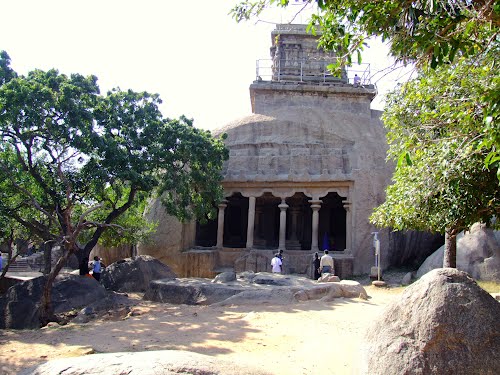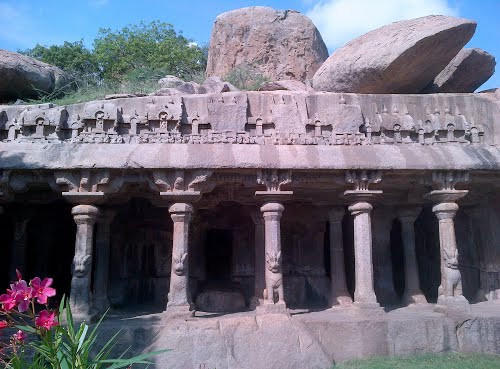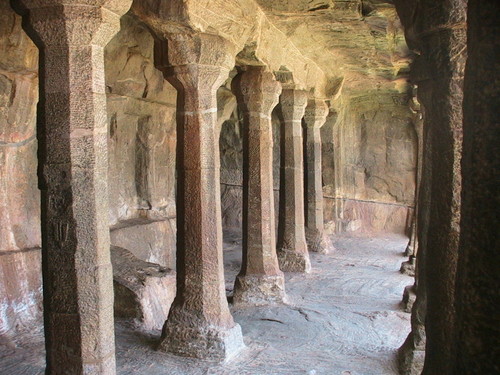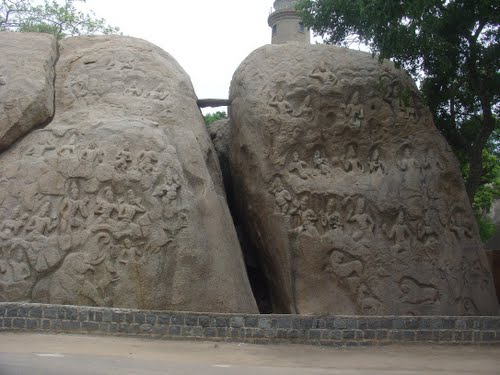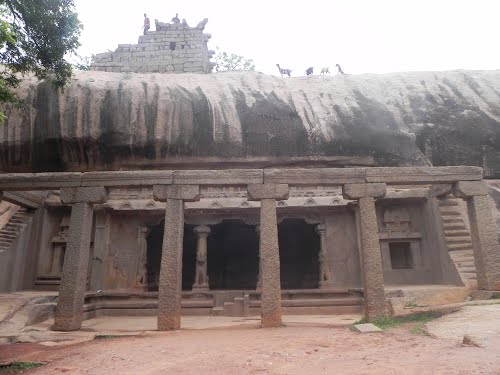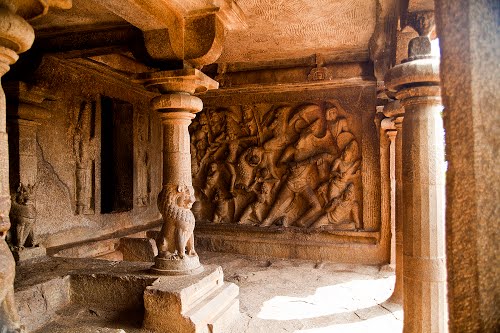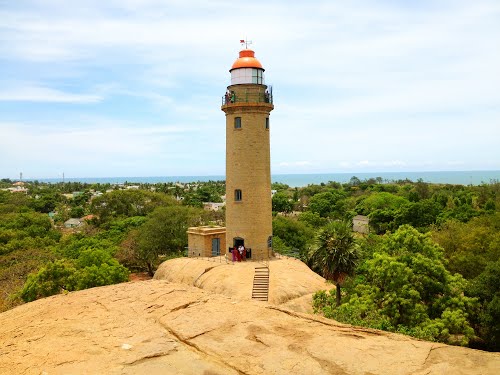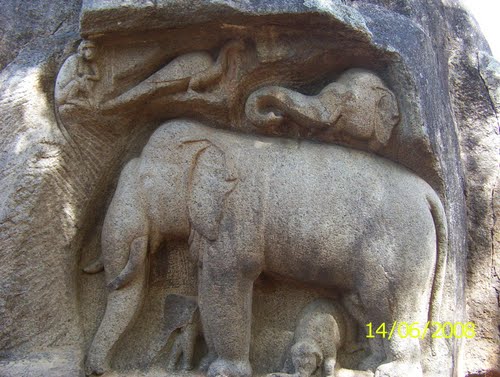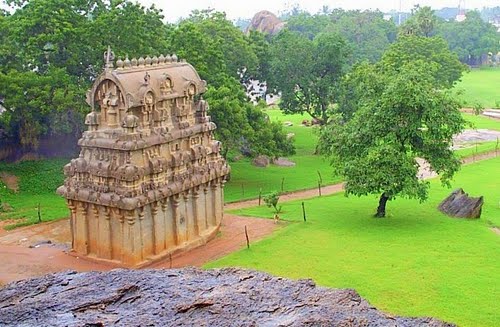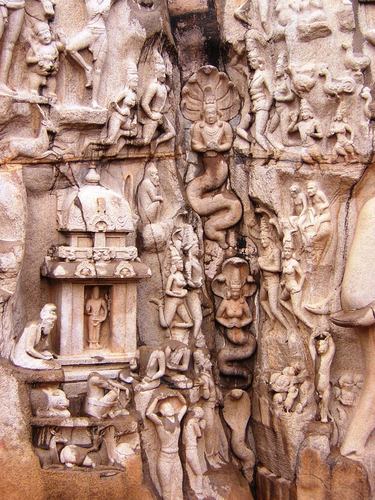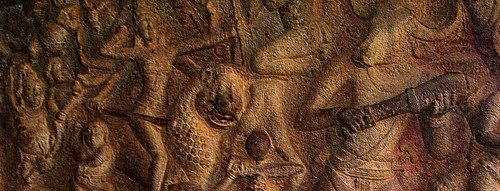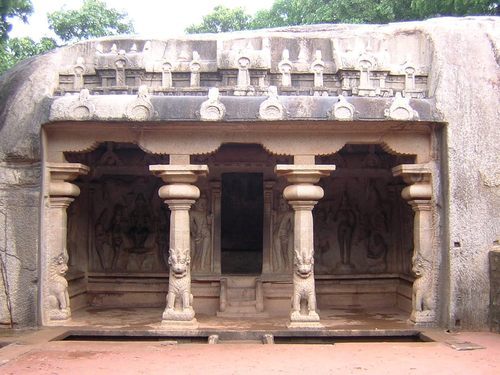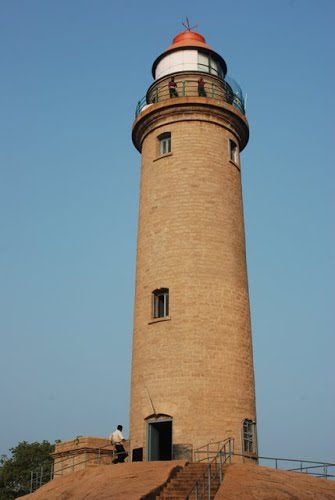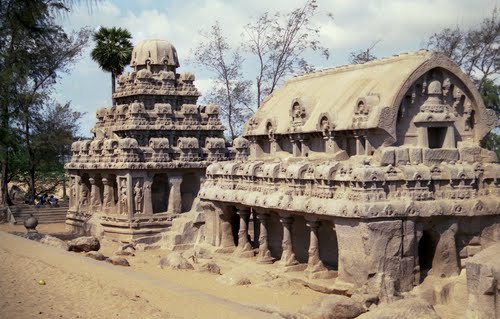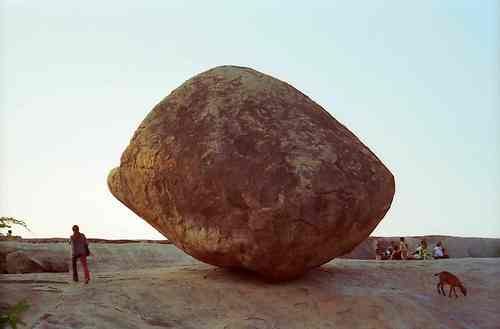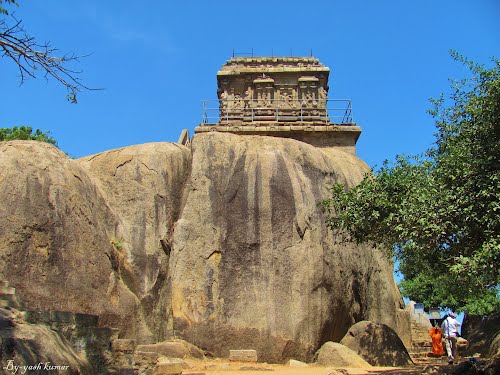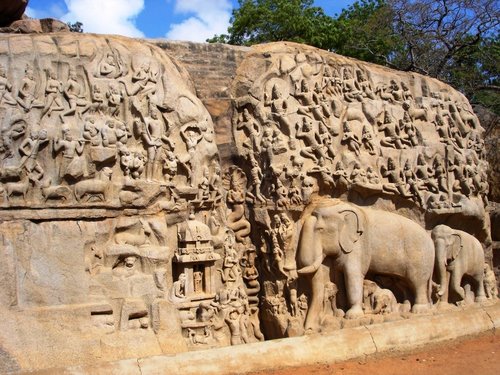Mamallapuram, also known as Mahabalipuram, is a town in Kancheepuram district in the Indian state of Tamil Nadu. It is around 60 km south from the city of Chennai. It is an ancient historic town and was a bustling seaport during the time of Periplus (1st century CE) and Ptolemy (140 CE). Ancient Indian traders who went to countries of South East Asia sailed from the seaport of Mahabalipuram.
By the 7th century it was a port city of South Indian dynasty of the Pallavas. It has a group of sanctuaries, which was carved out of rock along the Coromandel coast in the 7th and 8th centuries: rathas (temples in the form of chariots), Mamallapuram, also known as Mahabalipuram, is a town in Kancheepuram district in the Indian state of Tamil Nadu. It is around 60 km south from the city of Chennai. It is an ancient historic town and was a bustling seaport during the time of Periplus (1st century CE) and Ptolemy (140 CE). Ancient Indian traders who went to countries of South East Asia sailed from the seaport of Mahabalipuram.
By the 7th century it was a port city of South Indian dynasty of the Pallavas. It has a group of sanctuaries, which was carved out of rock along the Coromandel coast in the 7th and 8th centuries: rathas (temples in the form of chariots), mandapas (cave sanctuaries), giant open-air rock reliefs such as the famous Descent of the Ganges, and the Shore Temple, with thousands of sculptures to the glory of Shiva. The Group of Monuments at Mahabalipuram has been classified as a UNESCO World Heritage Site.
It has an average elevation of 12 metres (39 feet). The modern city of Mahabalipuram was established by the British Raj in 1827.
History
Megalithic burial urn, cairn circles and jars with burials dating to the very dawn of the Christian era have been discovered near Mahabalipuram. The Sangam age poem Perumpaṇarruppatai relates the rule of King Thondaiman Ilam Thiraiyar at Kanchipuram of the Tondai Nadu port Nirppeyyaru which scholars identify with the present-day Mahabalipuram. Chinese coins and Roman coins of Theodosius I in the 4th century CE have been found at Mahabalipuram revealing the port as an active hub of global trade in the late classical period. Two Pallava coins bearing legends read as Srihari and Srinidhi have been found at Mahabalipuram. The Pallava kings ruled Mahabalipuram from Kanchipuram; the capital of the Pallava dynasty from the 3rd century to 9th century CE, and used the port to launch trade and diplomatic missions to Sri Lanka and Southeast Asia.
An 8th-century Tamil text written by Thirumangai Alvar described this place as Sea Mountain ‘where the ships rode at anchor bent to the point of breaking laden as they were with wealth, big trunked elephants and gems of nine varieties in heaps’. It is also known by several other names such as Mamallapattana and Mamallapuram. Another name by which Mahabalipuram has been known to mariners, at least since Marco Polo’s time is "Seven Pagodas" alluding to the Seven Pagodas of Mahabalipuram that stood on the shore, of which one, the Shore Temple, survives.
The temples of Mahabalipuram, portraying events described in the Mahabharata, were built largely during the reigns of Narasimhavarman and his successor Rajasimhavarman and show the movement from rock-cut architecture to structural building. The city of Mahabalipuram was largely developed by the Pallava king Narasimhavarman I in the 7th century AD. The mandapa or pavilions and the rathas or shrines shaped as temple chariots are hewn from the granite rock face, while the famed Shore Temple, erected half a century later, is built from dressed stone. What makes Mahabalipuram so culturally resonant are the influences it absorbs and disseminates. The Shore Temple includes many reliefs, including one 100 ft. long and 45 ft. high, carved out of granite.
All but one of the rathas from the first phase of Pallava architecture are modeled on the Buddhist viharas or monasteries and chaitya halls with several cells arranged around a courtyard. Art historian Percy Brown, in fact, traces the possible roots of the Pallava Mandapa to the similar rock-cut caves of Ajanta Caves and Ellora Caves. Referring to Narasimhavarman's victory in AD 642 over the Chalukyan king Pulakesin II, Brown says the Pallava king may have brought the sculptors and artisans back to Kanchi and Mahabalipuram as spoils of war.
The fact that different shrines were dedicated to different deities is evidence of an increased sectarianism at the time of their construction. A rock relief on a sculpted cliff has an image of Shiva and a shrine dedicated to Vishnu, indicating the growing importance of these Sangam period deities and a weakening of the roles of Vedic gods such as Indra and Soma.
According to local guides, the site's name changed during the centuries. The first name was Katalmalai meaning "The land between the mountain and the sea" in Tamil. The second name was Mamallapuram meaning "The land of the great wrestler" as the region was ruled by the Pallavan King Narsimhavarman during the 8th century who was known for his strength. The third name was and is still there is Mähäbalipuram meaning "The land of Mahabali". According to legends, he was the grandson of the devoted Prahlada.

